Dear Reader,
Early summer has slipped into Japan: the days linger, fresh blossoms speckle the trees, and real heat still loiters on the horizon. It’s that brief, golden window made for wandering. I am Sneha Nagesh and in this edition of Secrets from Japan & Beyond, I would like to invite you to walk with me along the Katsuragi Kodo, an ancient Nara trail rich with folklore and history.
Is anything finer than planning a walk over breakfast? At Hoshino Coffee I start with toast, a boiled egg, and a Hoshino blend (just ¥500). Despite its many branches, Hoshino still feels like a family café with dark wood, friendly staff, and most importantly, good coffee made with a hand-drip technique.
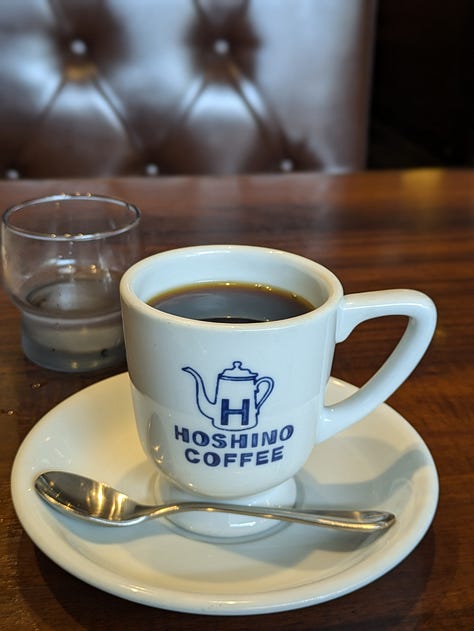

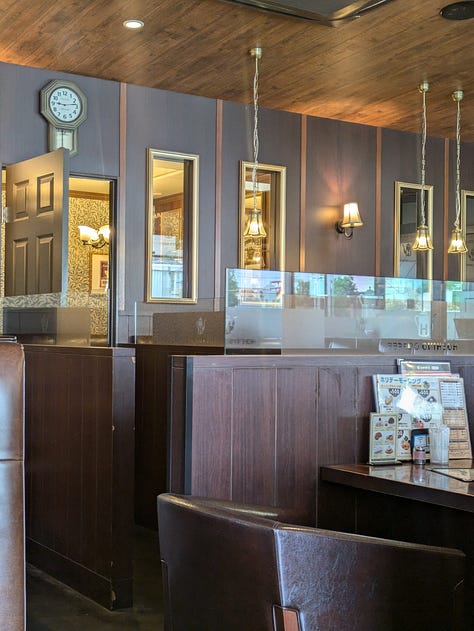
Today’s walk takes me to the Katsuragi Kodo in Nara Prefecture, a 13-15 km trail at the eastern foot of Mt. Katsuragi and Mt. Kongo. The path, which links ancient shrines, temples, and farming villages, once formed the political and ritual heartland of the powerful Katsuragi and Kamo clans during the fifth century. People have been walking this path for over a thousand years, and it’s steeped in history and legends.
I step off at Kintetsu Gose Station after a two hour train ride. The man behind the tourism desk stirs from a nap, blinks twice, then, hearing my Japanese, smiles and slides a trail map across the counter. I set off on foot. The air is filled with the croak of bullfrogs, butterflies flitting past, and, most notably, swallows that return each summer to stitch new nests under the eaves.
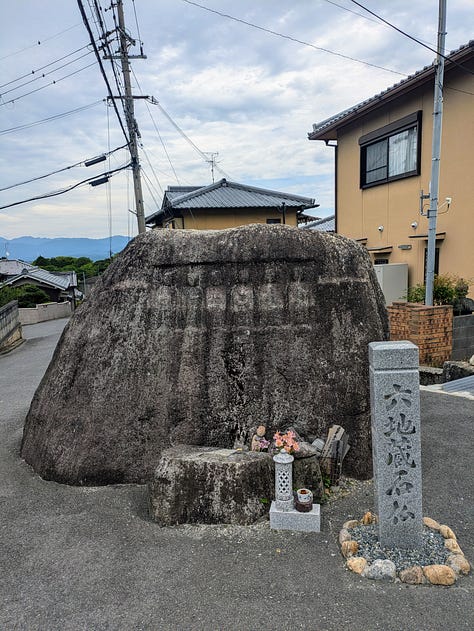
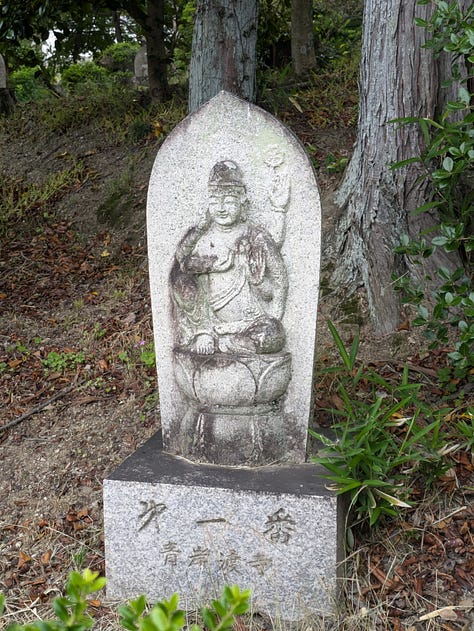
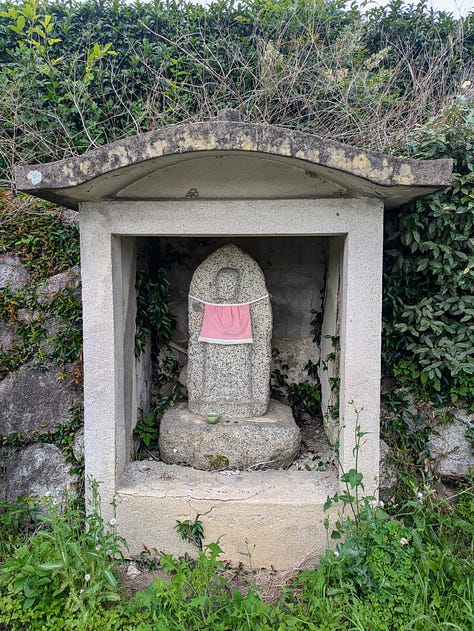
The path begins with six Jizo statues, carved during the Muromachi period after floods destroyed the village. These six statues represent the six paths of life in Buddhism, believed to mark the journey of the soul after death.
At Kuonji, home to several Buddha statues, I marvel at the 1,800 Jizo statues lined together at the temple, which were uncovered when the bamboo grove on the temple grounds was cleared 200 years ago. Legend says 14th-century warriors who died for their lord now inhabit the figures.
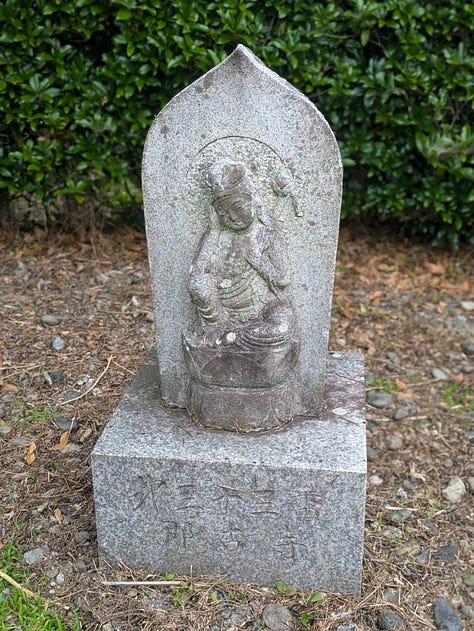
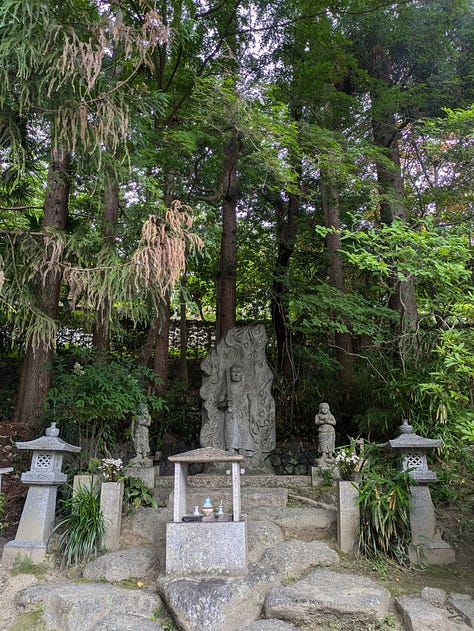
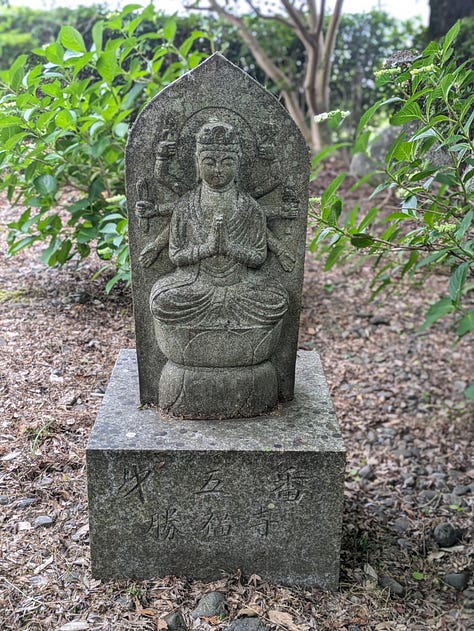
The next stop is Hitokotonushi Shrine, dedicated to the “God of the Single Word.” It is believed that any single wish prayed for here will be granted by the god. I have many wishes but today I just say a quiet thank you for the gift of this trip, one that followed days of wavering moods. An elderly couple dressed in the brightest colors imaginable pause to greet me with a beatific smile and a warm “Konnichiwa,” then stroll off.
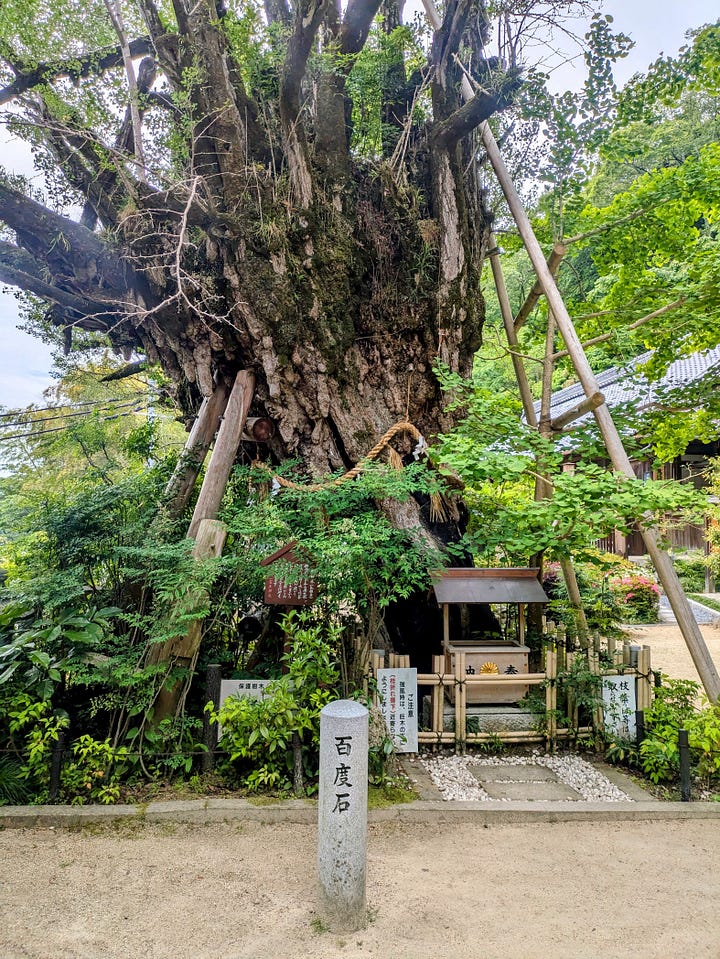
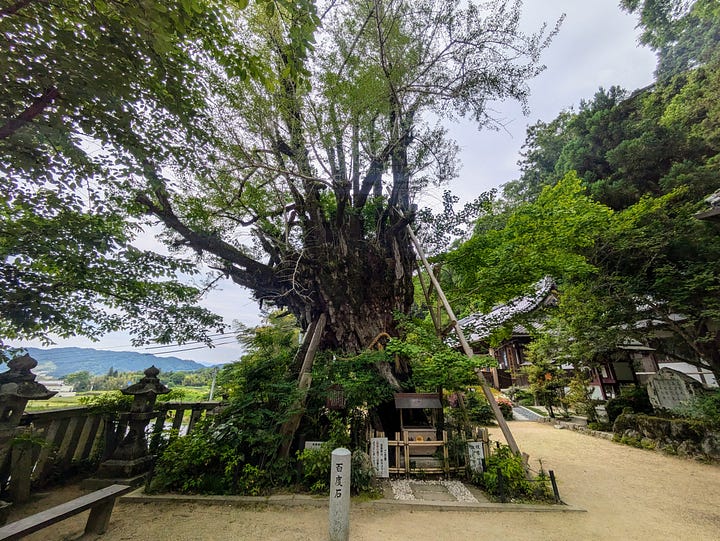
There is a towering 1,200-year-old ginkgo tree at the shrine. Stopping to look at it closely, I take in its humongous holed bark, healthy green leaves, and the sacred rope tied around it. For a moment, I feel connected with those who have walked this path before me — my modern compatriots and the priests, kings, ascetics, and rice farmers before us.
I continue toward a small postal town, Nakara Village. Here, a woman approaches me, asking where I’m headed. She goes inside, returning with a detailed map. I ask if she enjoys her daily life here. She smiles, pleased with the question, and replies affirmatively. Just before I leave, a cyclist I’ve seen earlier stops to check if I need help, ensuring I’m on the right path. He’s been cycling since 7 that morning from Osaka!
At times, the trail veers near a busy road, which brings me back to the "real world"—a reminder of the urban life I’m a part of. Most of the people I’ve seen on the farms are older, with a few young families and children. Slowing down opens up new perspectives and I notice things I never have before; I see a maple tree in bloom and black pine cylindrical shoots that look like small sculptures.
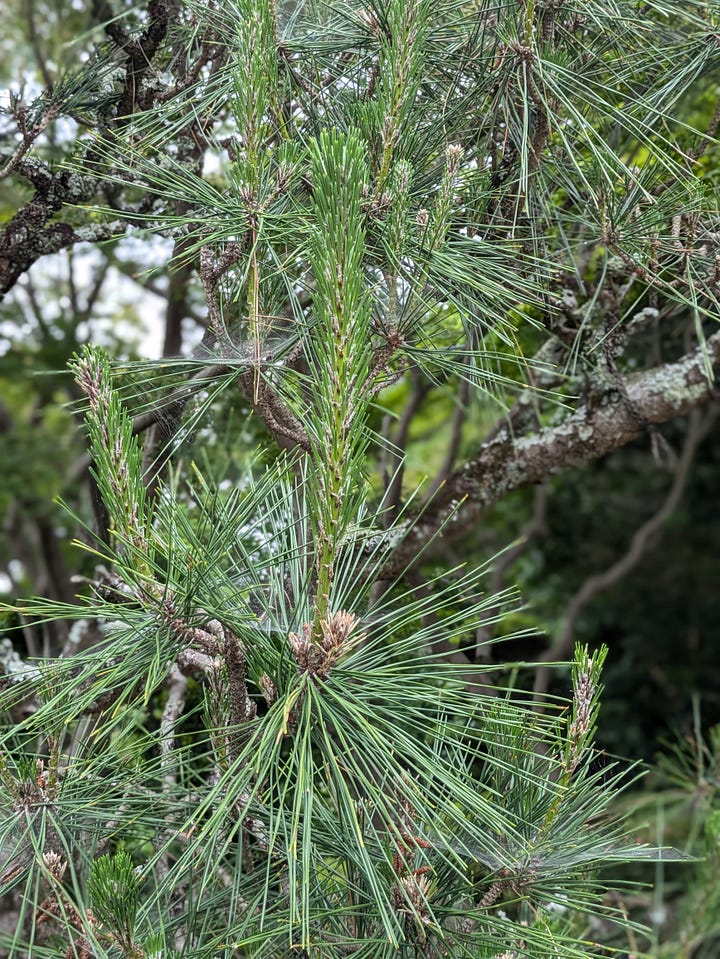
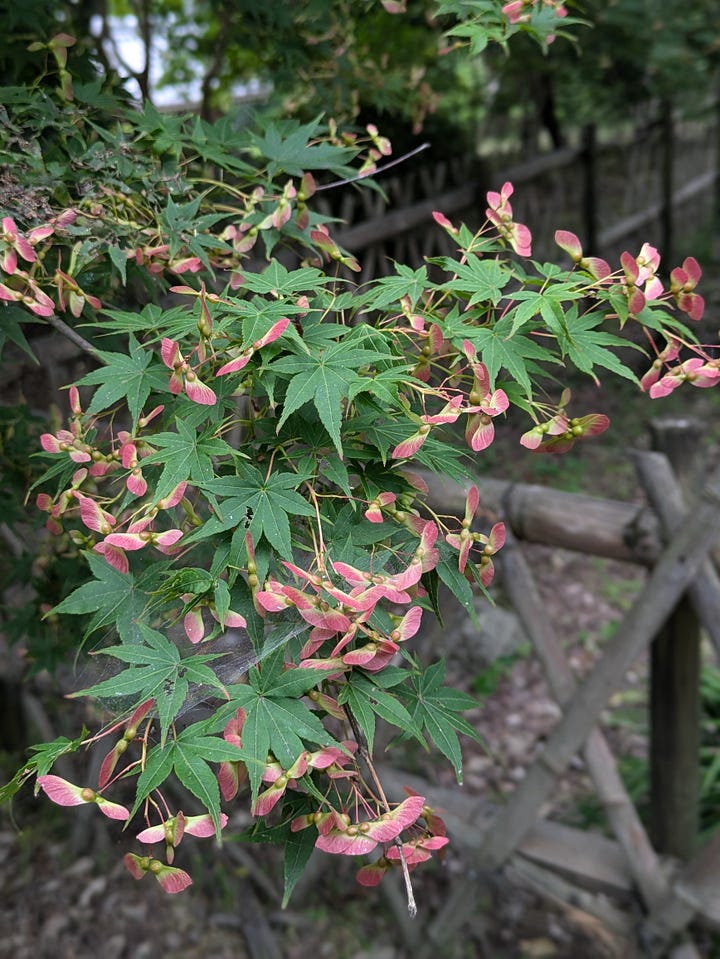
The landscape is captivating—the mountains, shrouded in a blue haze, overlook the verdant rice fields. The Nara basin stretches out before me, not dramatically, but filled with myth, power, and promise. Shinto lore calls it Takamagahara, the Plain of High Heaven, where gods once alighted.
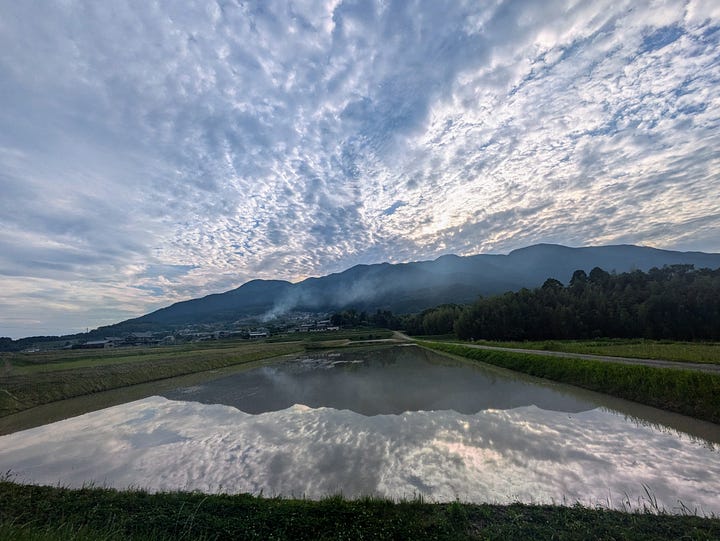
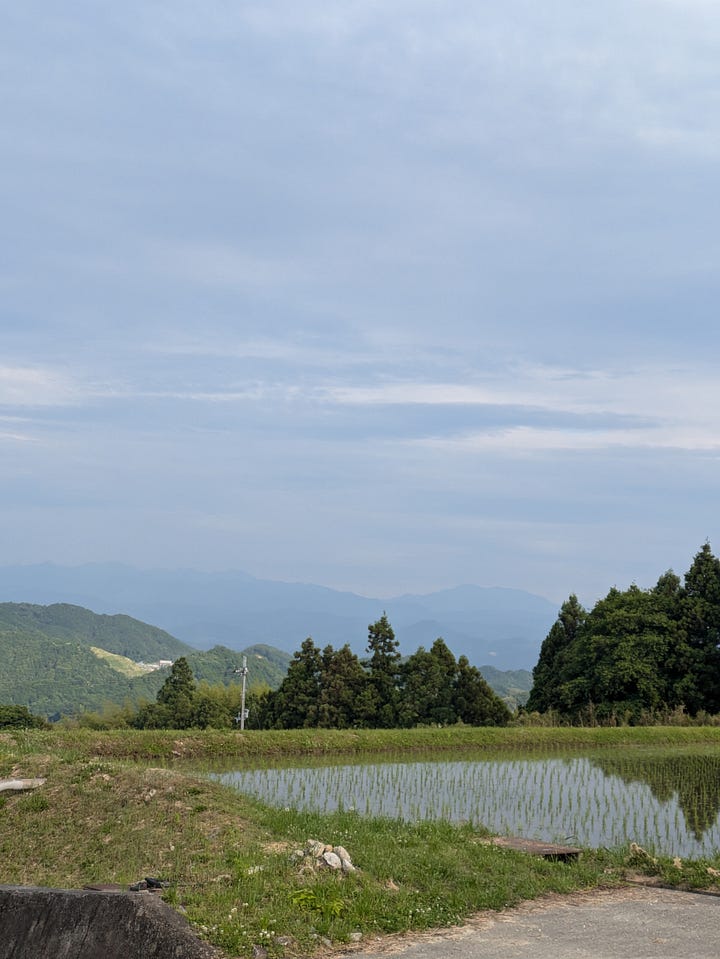
In the 20th century, with the construction of modern highways, the Katsuragi Kodo lost its role as a transportation artery and became a backroad. The area resisted modernization, preserving much of its historical scenery.
A short walk brings me to Gokurakuji, a quiet temple founded by the monk Ichiwa Sozu in the tenth century. He had a vision of a spot illuminated nightly, where he discovered a Buddha sculpture and built the temple in its honor. The temple, called Gokuraku, or "paradise," stands in solitude.
Beyond the temple, a gate opens to a deep forest. Hinoki and sugi trees grow side by side creating a patterned canopy. The silence here is profound. If I listen closely, I can hear the sound of my breath. Time slows and envelops me in a stillness. I let it wash over me, seep into my being. A nightingale pipes from somewhere unseen. The gate opens, and the air fills with sound—birdsong, insects, and the gurgle of water. Rain begins to fall, adding the rhythmic sound of droplets on rice fields.
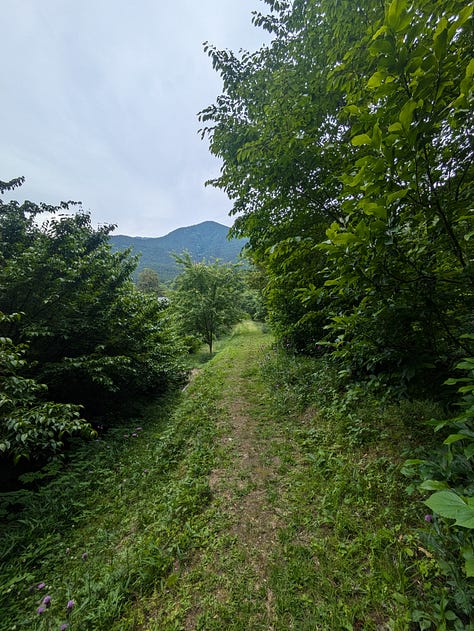
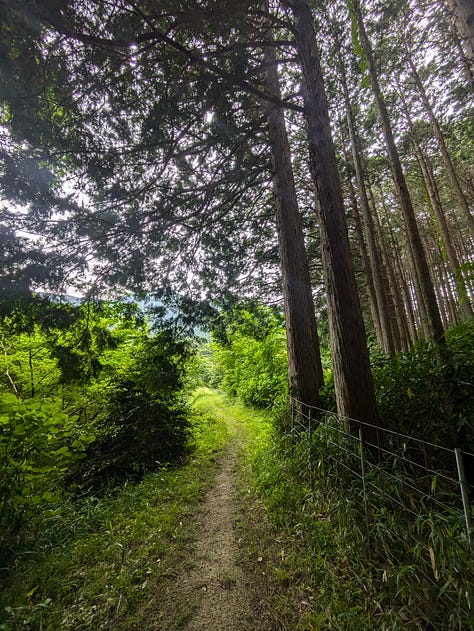
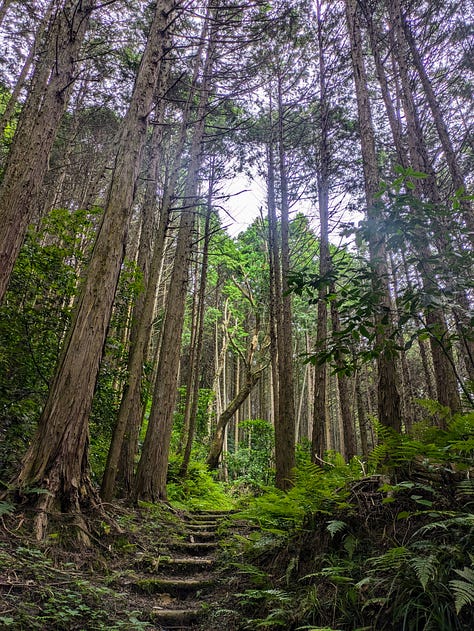
The bright path leads to Takamahiko Shrine, once considered one of the highest-ranking shrines connected with the Katsuragi clan. The shrine sits on elevated ground at 460m, seemingly blanketed in mist. Someone has left an offering for the komainu or guardian dogs at the gate. Centuries-old Sugi trees line the path just outside the shrine. The shrine feels like a place of another world, but the trees truly elevate the experience, evoking deep gratitude for those who have cared for them.
From here the path goes back to a tarred road, bamboo groves lining the path, eventually leading to the last sacred site on this journey, a magnificent grand shrine called Takakamo Shrine, the birthplace of the Kamo clan. Rituals have been carried out here since the Yayoi period. It is a dazzling sight, with a green pond where golden, orange, and white koi swim. Large sugi trees surround the pond, and a forested path leads to smaller shrines.
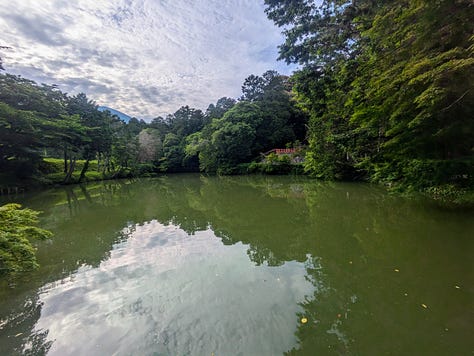
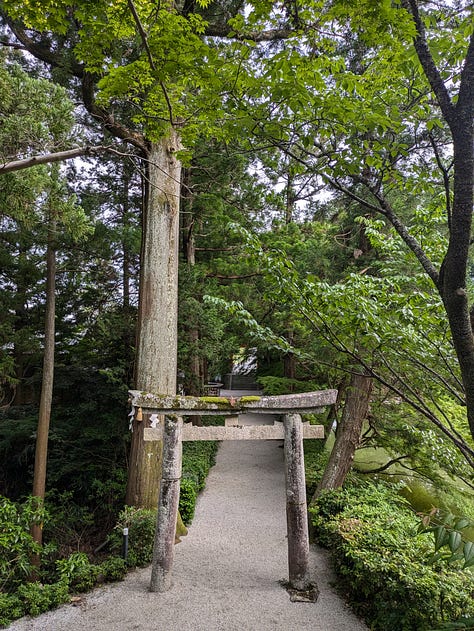
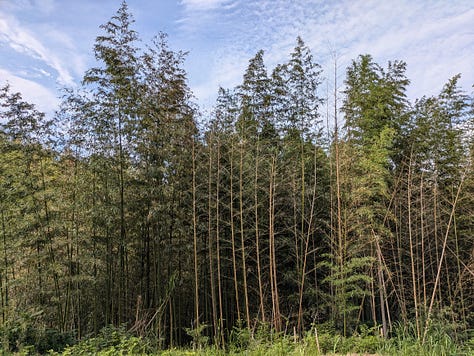
As I wait for the bus, a lively family of swallows, who’ve built a nest near the bus stop, fly in and out of their home, keeping me company. The sun is setting, the sky is full of purple streaks, and the bus is moving like a Totoro bus with agility and speed towards another world. This other world bursts into focus — large home centers, ramen chains, pachinko parlors, laundromats. The weather-beaten faces of farmers I encountered all day give way to men with dyed yellow hair sitting outside the convenience store, smoking cigarettes. It reminds me of writer Sam Anderson’s bizarre and fascinating quest for the Old Leatherman, an odd 19th century vagabond who traveled around towns in north eastern United States in handmade leather suits.
The bus arrives at the station. I hurry to a vending machine and stop as I look for change. I hunt for something tangible in my mind that I can take back with me from my experience today. I have been on several walks like this but something about today was different. I tried to give as much as I could, in terms of my presence. And the walk gave right back. Stillness, I realize, waits wherever I’m willing to meet it. You get what you give. I buy a bottle of ice-cold barley tea and gulp it down in one satisfying go.
References/Access
Kintetsu line from Osaka Abenobashi station (3 minute walk from Midosuji Tennoji Station) to Kintetsu Gose station. 30 minute walk to Jizo statues, or a bus that normally goes once an hour.
Bus back to Kintetsu Gose station from Kaze no mori bus stop (once every hour on weekends, get updated times from tourism office in Kintetsu Gose station)
EN
https://www.visitnara.jp/lists-and-stories/story/hiking-naras-ancient-paths/
https://katsuragisyugen-nihonisan.com/en/model/
A map in English. The path starts from a slightly different location. I started my walk at Gose station
https://katsuragisyugen-nihonisan.com/en/pamphlet/ccba94fb508efe10171f1f6834eb9709a56e01c1.pdf
JP
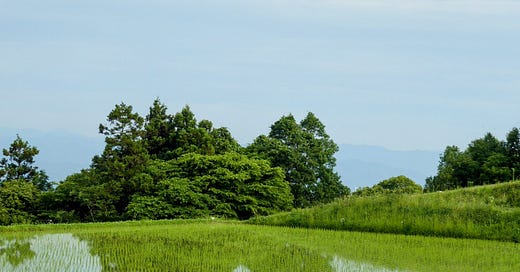


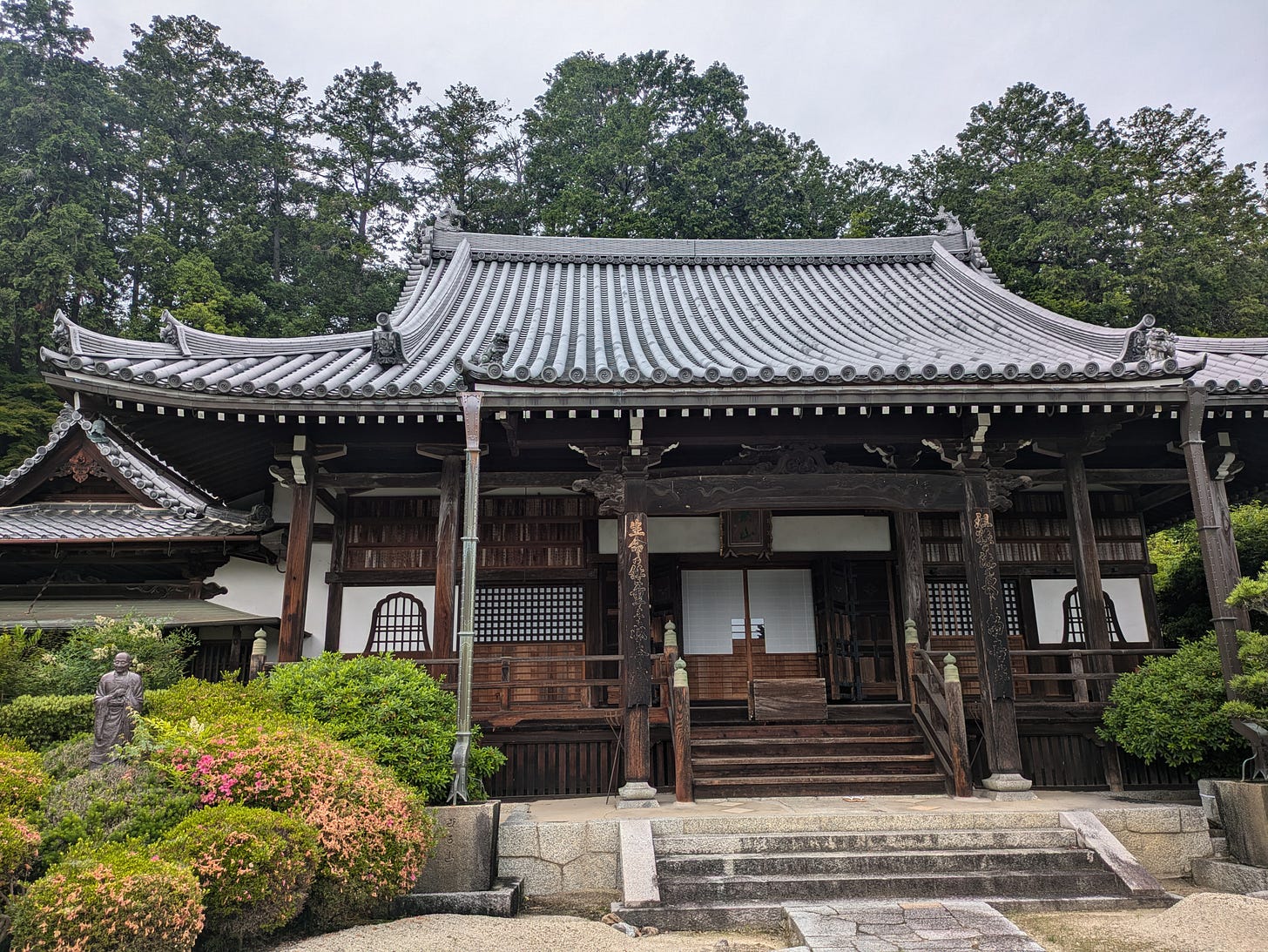

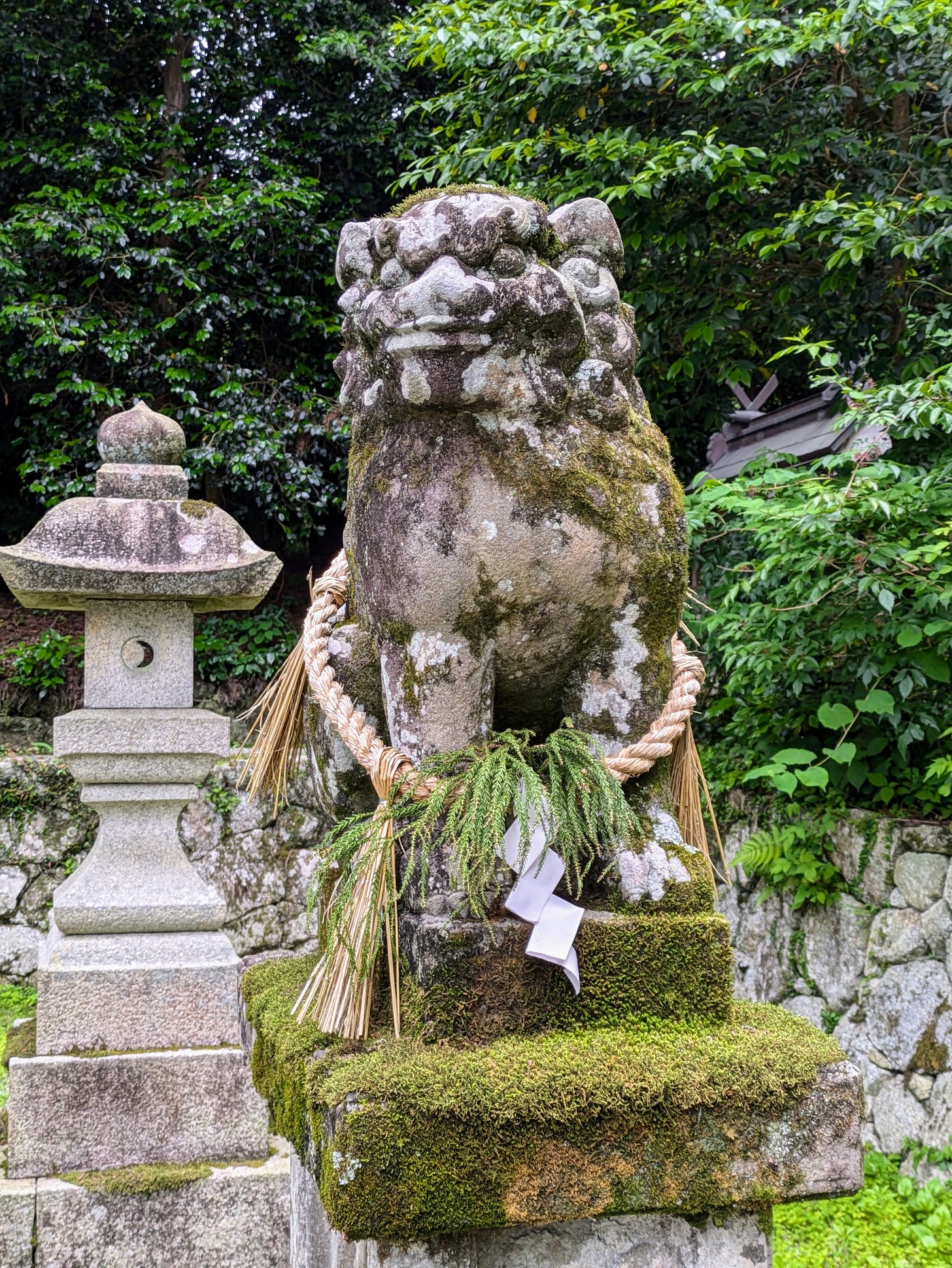
Beautiful, informative journey. Did you do all of this by yourself?
I did a bit of Nakasendo. This makes me want to go back. Thank you for sharing.